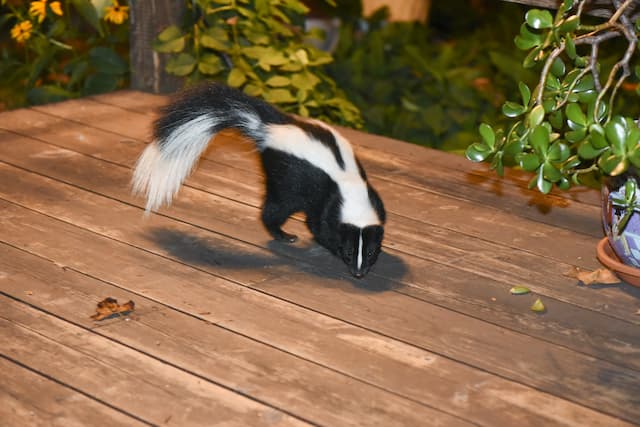Skunks frequently make unanticipated appearances in the urban wildlife symphony, leaving their distinctive impression on the environment. Although skunks’ distinct appearance and acrid spray can be memorable, preventing future skunk infestations is a proactive step toward maintaining a peaceful coexistence. Backyard skunk-proofing involves a combination of strategic measures that deter these animals while preserving the outdoor space’s integrity.
Understanding Skunk Conduct: The Initial Step
To effectively skunk-proof your backyard, it is necessary to comprehend their behaviour and customs. Skunks are opportunistic foragers attracted to habitats with abundant food, shelter, and water. By identifying and removing these attractants, you can create a less attractive environment for skunks.
-
Protect Waste Receptacles: Strengthen the Buffet
Skunks are resourceful scavengers, and unattended trash cans can serve as an irresistible buffet. Invest in durable, animal-proof trash cans with securely sealed lids to prevent skunks from gaining access to food. Regularly disposing of food refuse and cleaning the area surrounding trash cans reduces the likelihood that these nocturnal visitors will be attracted.
-
Eliminate Possible Food Sources: Concentrate on Grubs and Insects
Skunks have a special fondness for grubs and insects, for which they frequently burrow in lawns. Consider implementing natural insect control techniques to reduce the availability of these food sources. Nematodes, beneficial insects, and organic therapies can assist in controlling the grub population, making your yard less attractive to skunks.
-
Remove Potential Hiding Spots: Skunk-Proof Landscaping
Skunks are attracted to yards with ample cover. Reduce potential den sites by trimming overgrown vegetation, clearing away detritus, and minimizing dense shrubbery. To make your property less inviting to skunks seeking shelter, prune tree branches that provide simple access.
-
Seal Entry Points: Reinforce the Fortification
Their ability to create burrows beneath structures is a challenge, as skunks are adept diggers. Conduct a comprehensive property inspection and seal any potential entry points. Hardware cloth should be used to reinforce the base of decks, outbuildings, and porches to prevent skunks from tunnelling underneath.
-
Motion-Activated Lights and Sounds: Startling Dissuaders
Skunks are nocturnal animals whose activities can be discouraged by altering their preferred habitat. Install motion-activated lights and sounds that frighten skunks as they approach. This interruption may deter them from entering your backyard.
-
Natural Repellents: Undesirable Scents
Skunks possess an acute sense of smell, and certain odours can deter them from accessing your yard. Use natural repellents such as citrus peels, cayenne pepper, or predator pheromones to create a hostile environment for skunks around the perimeter of your property.
-
Professional Help: Skillful Skunk-Proofing
In cases of persistent skunk presence or extensive yard damage, it is prudent to seek the assistance of skunk removal professionals. These experts have the knowledge and experience to implement skunk-proofing measures tailored to your specific situation, ensuring an all-encompassing approach to prevention.
A Sanctuary of Peace: Coexistence with Urban Wildlife
Skunk-proofing your backyard exemplifies responsible management of the urban environment. By gaining an understanding of skunk behaviour and instituting preventative measures, you create an environment where humans and wildlife can coexist in harmony. Skunk-proofing is not about exclusion; rather, it is about fostering a balance that enables both species to flourish while preserving the beauty and integrity of your outdoor sanctuary. As you embark on the journey of skunk-proofing, you contribute to a dynamic narrative of coexistence in the dynamic urban ecosystem.
